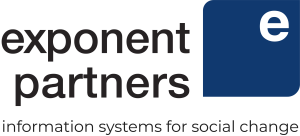Your system is live! Here’s how to keep it that way.
You spent hours working late on grant proposals to raise the funds. You sweet-talked major donors into supporting an unglamorous infrastructure project with promises of future efficiencies, of freeing up human staff time to do the things that robots can’t. You negotiated with vendors to bring licensing and implementation costs down. You persisted through all the challenges that come with collaborating remotely in a global crisis. You celebrated with your team on the day the system finally went live. And now you have a working, top-of-the-line, flexible system that meets all of your most important needs. (At least, it meets the needs you had when you sat down to write that grant, all those months ago.) And through it all, you and your colleagues worked tirelessly (and sometimes exhaustedly) to make sure that you were meeting your mission and serving your constituents to the best of your ability. You did it.
So … why does it feel like you’re just beginning? Where did those efficiencies go? You know you have new possibilities at your fingertips – how do you find out what they are and make the best use of them in support of your mission?
The truth is, in some ways, you are just beginning. What you’ve done so far is the introduction; welcome to Chapter One.
Where did those efficiencies go?
Of course, computers can do certain things a lot faster than humans can. And it’s exciting to think about not having to do some of the rote tasks we do every day, or at least to not have to take quite so much time on them.
It’s easy to imagine what our lives could look like if we did all the same things, but faster. And in a lot of cases within our organizations, tech can help us realize that vision.
But if we aren’t intentional and collaborative about how we use and develop the tech, it can also help us do some not-as-exciting things a lot faster, like surface conflict, spend precious resources on changes that don’t impact our mission, and create messy, duplicative data that we can’t trust to make decisions or demonstrate our impact. When we’re confronted with all these things, it can feel like the technology is making things worse, not better.
How do we get back on track?
To keep your investment on track, you need a process to make sure that the efficiencies you’re developing are the ones that will speed your organization along the path toward the outcomes you care about the most. This means gathering a braintrust of key team members from different parts of your organization who can review requests for technology enhancements and ask some important questions:
Who would be impacted by this change? How?
We can make this change… but should we?
When should we make the change?
How should we communicate about it?
How will this change impact our data?
The jargon-y name for this is a governance team, so-called because they are making decisions that will govern how your system gets used and enhanced over time. Your governance team meets regularly and makes decisions about things like:
- System security (who gets to see what data? How do you handle providing and revoking tech access for new and exiting staff?)
- What processes need to be fixed with technology, and what really needs more training, documentation, and/or new business processes instead
- How to prioritize when different users have needs that conflict with one another
- Which requests need your biggest investments (time, energy, money) because they help move your organization’s big-picture goals forward.
- Whether to take on a request that may create more work down the line (technical debt)
- Whether to build a custom solution, hire a tech role in-house or purchase an existing product or service
They also help set the rules for how technology changes are rolled out across the organization – they define your protocols for development and testing, getting input from stakeholders, documentation, and training.
Who needs to be involved?
Who should be part of your governance team will depend on your organization’s structure. At a minimum, it should include the person or people in charge of making technical updates, someone who can speak to business priorities, and a decision-making representative from each department that uses the technology you need to address.
You will also need a straightforward path for your staff outside the governance team to submit their feedback about the technology they use. The governance team will probably have thoughts about what to improve, but they shouldn’t be the only ones coming up with ideas for enhancements or identifying when issues need to be addressed; for the system to grow and evolve for the entire organization, you need feedback and contributions from all kinds of users. (And make sure you’re covering all of your stakeholders – if the technology you’re working with impacts your constituents or clients, they should be consulted too!)
Just as importantly, you’ll need a process by which your governance team can follow up with staff once those enhancements are released or issues have been resolved, so that you can understand the impact of your work on their day-to-day and long-term needs.
This feels like a lot. How do we start?
This might feel a little overwhelming. All this might feel like a lot more care and feeding than you expected when you started raising funds for this new system. And that makes sense – many of us in nonprofits are used to working around static technology that was purpose-built … for someone else’s purpose. And chances are, one of the big reasons you signed up for this tech in the first place is because you know your organization needs to be more adaptable than that static technology can accommodate.
The only way to eliminate the need for continued systems work is for your organization and the environment it operates in to stay exactly the same, from the moment you identify your requirements onward. And if the last two years have taught us anything, it’s to expect that won’t be the case.
The good news is that you don’t have to do this alone, or from scratch. Through our Managed Services offering, Exponent Partners can help you establish this critical governance framework, make recommendations for how to develop your team, while also supporting you in executing on those enhancement requests and issue fixes. Reach out to us today for a conversation on how to incorporate governance into your organization’s social impact platform.

